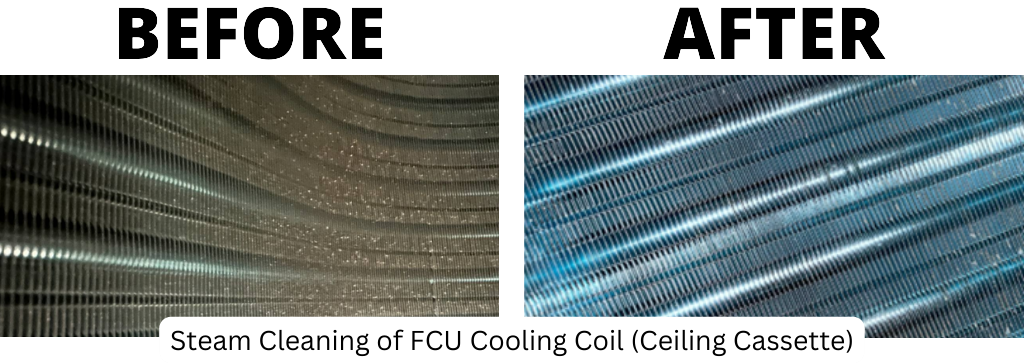REVITALIZING INDOOR AIR QUALITY IN COMMERCIAL OFFICE SPACES
Type of Building: Commercial
Type of Property: Office
Equipment: FCU Cooling Coils (Ceiling Cassette, Wall Mounted), Ducts
Indoor Air Quality (IAQ) Solution: Steam Cleaning, Duct Cleaning and Air Purifiers
An office building housing a diverse array of businesses, from F&B establishments to typical corporate firms, sought assistance from Daikin. The occupants were experiencing challenges related to unpleasant odors within their offices and premises, prompting them to seek a solution for the issue.

What are the IAQ problems?

The office is actively addressing Indoor Air Quality (IAQ) concerns, specifically focusing on challenges such as a high surface microbial count and unacceptable formaldehyde concentration.
The high surface microbial counts pose a potential risk to occupants, potentially leading to respiratory conditions and allergies, highlighting the need for improved workspace conditions. Additionally, the presence of a high concentration of formaldehyde suggests that the office space contains substantial sources of formaldehyde emissions. Potential contributors include various building materials, furniture, adhesives, cleaning products, and other items that may release formaldehyde into the indoor environment, indicating the necessity for measures to mitigate these sources.

What IAQ Solutions were proposed?


To combat the identified IAQ issues, a comprehensive solution was implemented, incorporating several measures.
Steam cleaning was employed to eliminate microbiological growth, pollutants, and dust within the workplace environment. This method not only reduces air contaminants but also enhances the overall office environment by maintaining better air flow, consequently lowering the risk of airborne particles and contributing to improved indoor air quality and system efficiency.
Duct cleaning was another crucial step taken to address potential health hazards. This process effectively dealt with foul odors stemming from mold, bacteria, or decomposing matter, including remnants of vermin or pests present within the ducts. Beyond addressing odors, duct cleaning significantly improved the efficiency of the HVAC system by ensuring proper airflow, thereby optimizing both cooling and heating efficiency.
In addition, air purification techniques were implemented to further enhance IAQ. This measure played a pivotal role in reducing concentrations of formaldehyde and other contaminants in the air. By doing so, it effectively lowered the risk of various respiratory issues, allergic reactions, and the exacerbation of existing health conditions. Moreover, the implementation of air purification methods not only created a safer and healthier living or working environment for occupants but also minimized exposure to formaldehyde and other hazardous chemicals.

